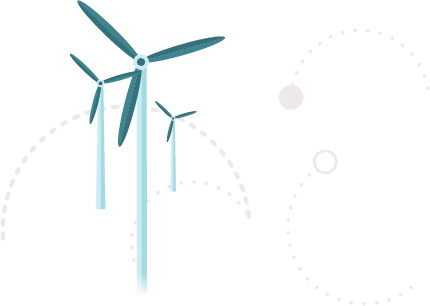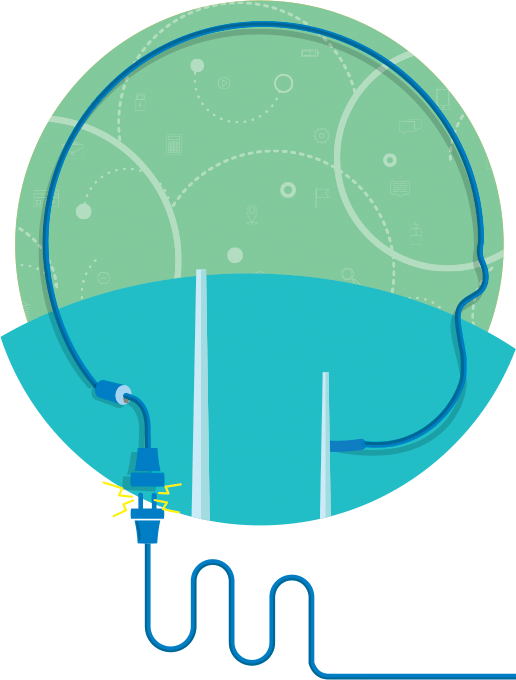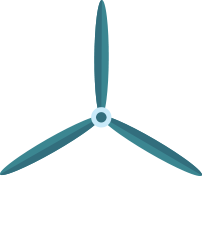The electricity sector as a whole suffered from a nationwide reduction in industrial activity as well as an ongoing debate surrounding regulatory issues, among these the Generation Scaling Factor – the assured energy adjustment factor used by the hydro plants -, a reflection of the hydrological crisis, which began in late 2012. The GSF question was resolved with the publication of Law 13.203/2015 of December 9 and subsequently regulated by the National Electric Energy Agency – Aneel. With the latter´s approval, Tractebel Energia, together with other companies, signed up to the renegotiation of hydrological risk for those plants selling energy through the regulated contracting environment as opposed to those operating in the free market and not parties to the renegotiation agreement.
The Company was also successful in 2015 in maintaining its credit risk ratings on the national scale, despite the downgrade of Brazilian sovereign risk by the leading risk classification agencies. In this respect, on December 31, 2015, net corporate debt stood at R$1.2 billion, less than the net income for the fiscal year and 45.7% less than at the end of 2014, a reflection of Tractebel Energia´s continuing financial soundness.
For the 11th consecutive year in 2016, the Company was selected as a component of BM&FBovespa´s (ISE) Corporate Sustainability Index. The ISE serves as a tool for evaluating the performance of companies listed on the BM&FBovespa in terms of economic efficiency, environmental equilibrium, social justice and corporate governance. Until 2015, this stock index represented an equities portfolio of up to 40 companies although reduced to 35 in 2016. Only Tractebel Energia and nine other companies have made up the ISE for consecutive years since its inception in 2005.

Tractebel Energia´s parent company is a world leader in independent energy production and is consequently part of the global transition towards energy decentralization, decarbonization and digitization. It is in this context that GDF SUEZ has undergone a worldwide restructuring, in the process, changing its corporate denomination to ENGIE. For this reason, since December 17, Tractebel Energia has adopted a new logo. With its potential for renewable energy sources and markets, Brazil has been made one of ENGIE´s 24 business units in the world, separate from the bloc of other Latin American countries – ratification of the confidence the parent company has in the capacity of the country to meet its challenges and grow.
As part of this long-term view, Tractebel Energia has proceeded apace with its expansion plan, selling 9.2 average MW for delivery over 20 years beginning November 1, 2018 on the occasion of Aneel’s second reserve energy auction in November 2015. This energy is to be generated by the Assú V Photovoltaic Plant, part of a larger project comprising 5 power plants – the Assú Complex in the municipality of the same name in the state of Rio Grande do Norte. Assú V will have an installed capacity of 36.7 MW, work on the plant being scheduled to begin in 2016.
In May, work was concluded on expanding the capacity at the biomass-fired Ferrari Thermoelectric Power Plant in Pirassununga (SP) to 80.0 MW. This adds a further 15.0 MW to the original capacity and therefore to the Company´s generator complex as a whole. Work continued apace on the Santa Mônica Wind Complex in Trairi in the state of Ceará, commercial operations expected to begin during the course of 2016. The complex will be made up of four wind farms with a total capacity of 97.2 MW. The Company has already sold 46.0 average MW from this operation at the A-3 Auction held in August 2015 for a 20-year term, deliveries commencing January 1, 2018.
Meanwhile, a start on the implementation of the first phase of the Campo Largo Wind Complex in the state of Bahia with an installed capacity of 326.7 MW was initiated in 2015. This involves the detailed study phase of evaluation of the project’s socio-environmental insertion in the region, of equipment circulation logistics and possible synergies for linking its 121 wind turbines – each with an output of 2.7 MW – to the National Interconnected System (SIN). Some of the energy to be produced totaling 82.6 average MW, was sold for a term of 20 years, deliveries beginning January 1, 2019, while the remainder is to be transacted on the free market. The Company’s wind projects portfolio also includes the second phase of operations at the Campo Largo site with an installed capacity of 300 MW, and Santo Agostinho in the state of Rio Grande do Norte, with a further installed capacity of 600 MW.
Again, worthy of mention was the licensing and initial work on the Pampa Sul Thermoelectric Power Plant in the municipality of Candiota, state of Rio Grande do Sul. With an installed capacity of 340.0 MW, the project has been approved as a priority by the Ministry of Mines and Energy and will be connected up to the SIN, thus contributing to the stability of the grid’s supply.
The Jirau Hydroelectric Power Plant, with a capacity of 3,750 MW comprising 50 units each with an output of 75 MW, reached its assured energy of 2,184 average MW in July with 33 generator units in operation. By December, this total had been increased to 40, with a further unit at the test phase. ENGIE has a 40% stake in the project and scheduled to be transferred to Tractebel Energia subject to the approval of the Special Independent Committee for Transactions with Related Parties, the majority of members of which are representatives of minority shareholders with seats on the Company’s Board of Directors.
The Company also invests in the operational and maintenance excellence of the generator complex. If programmed stoppages in 2015 are discounted, plant uptime was 97.4%, surpassing the 96.5% reported for 2014. Tractebel Energia invests in modernization: in addition to improving the performance of the plants and lengthening their useful life, modernization work also ensures incremental gains in output. For instance, improvements at the Salto Santiago, Ponte de Pedra and São Salvador plants have ramped up commercialization capacity of the Company’s proprietary energy output already by 15.5 average MW in 2015. Once work is complete, a further 13.2 average MW will have been added to assured energy.
The Company’s occupational health and safety record was also a highlight of the year with no accidents on the part of direct employees requiring time off work. In the case of the employees of outsourced suppliers, there were three accidents involving 22 lost days.
The Company’s aim is also to contribute to improvements in the community’s quality of life. The principal project on this front is the installation of Culture Centers in the regions where power plants are located. Emphasis is given more particularly to those municipalities remote from state capitals where artistic, cultural, skills training and leisure options are limited. Four of these centers have already been opened in Entre Rios do Sul (RS), Quedas do Iguaçu (PR), Alto Bela Vista and Capivari de Baixo (SC). Equipped with auditoriums and exhibition halls, the centers offer courses in digital inclusion and professional skills upgrading. Management of the centers is in the hands of local associations, members of which receive prior training in administering cultural spaces and projects. By the end of 2017, the Company is to inaugurate a further four centers based on the same concepts in Minaçu (GO), Trairi (CE), Saudade do Iguaçu (PR) and Itá (SC).
A vital industry such as the electrical sector requires both planning as well as a long-term regulatory framework within which to operate. Imbalances between energy supply and demand and/or commercialization prices in relation to investments – more especially when these involve importation during a period of currency devaluation – are factors which can occur over a short-term horizon, making even greater the need for responsibility of sector entities and for dialog and understanding. At the same time, investments in renewable energy sources will continue to concentrate the minds of entrepreneurs and Government. Similarly, we believe that natural gas may also have a key role to play in providing greater security of energy supply in addition to lowering emissions compared with the burning of coal and oil.
In this context, ENGIE´s plans for operations in Brazil are not limited to investments in expansion to serve the basic needs of the country. With its new structure, the parent company´s objectives include gaining a share of new markets and a closer proximity to clients and consumers through enhanced synergies between products and services. Such products and services range from solutions for distributed generation and greater sustainability for cities to energy efficiency services and other services with an industrial application.
Finally, we wish to extend our thanks to the employees, clients, shareholders, service providers, suppliers and partners of both Tractebel Energia and ENGIE, together with governmental and non-governmental organizations in the roll call of corporate relationships in addition to all others who share our efforts and successes.








